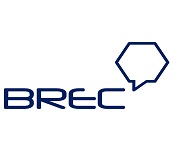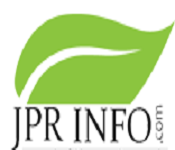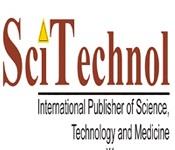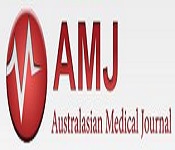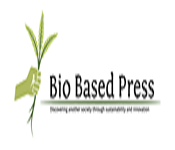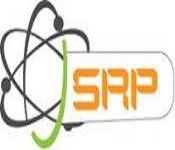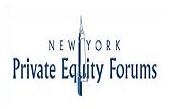Theme: The Blueprint of Life
Molecular Biology - Conference 2018
Conference Series LLC LTD is pleased to invite the contributors across the globe on its "3rd International Conference on Molecular Biology & Nucleic Acids" which is scheduled at Toronto, Canada during August 27-28, 2017.
3rd International Conference on Molecular Biology & Nucleic Acids conference gives a chief stage to introduce and examine key disclosures in molecular biology, nucleic acids which have impacted nearly every facet of biology with wide ranging implications for human well-being. The overarching long-term goal of this conference is to create a scientific environment conducive to cross-disciplinary talk and trade of new thoughts by bringing together the world’s leading analysts with junior researchers, to enhance our understanding of the role of nucleic acids in biology, human health and disease. Specific topics will include: Molecular Biology, Chemical Biology and Nucleic Acid Chemistry, DNA Replication and Genome Integrity, RNA/DNA Structure and Dynamics, Chromatin and Transcription, RNA/DNA in Cellular defence, Computational Biology, RNA/DNA Conflicts, Non-Coding RNAs, and Mechanisms of Signal Transduction, and special aspects of Molecular Medicine. The Molecular Biology Conference is unique in bringing the RNA and DNA fields together in the field of Nucleic Acids.
This Conference will provide a perfect platform addressing:
- Commendable talks by top-notch global academic community
- Sterling workshop/symposium sessions
- Remarkable awards and global recognition to meritorious Researchers
- Global networking with 30+ countries
- Novel techniques to benefit your research
- Global networking & business opportunities
- Exquisite platform for showcasing your products and global sponsorship
About Toronto:
Toronto is the capital of the Canadian province of Ontario. It is located within the Golden Horseshoe in Southern Ontario on the northern shore of Lake Ontario. With 2,731,571 residents in 2016, it is the largest city in Canada and fourth-largest city in North America by population. Also in 2016, the Toronto census metropolitan area (CMA), the majority of which is within the Greater Toronto Area (GTA), had a population of 5,928,040, making it Canada’s most populous CMA. A global city, Toronto is a centre of business, finance, arts, and culture, and is recognized as one of the most multicultural and cosmopolitan cities in the world.
Indigenous peoples have travelled through and inhabited the Toronto area, situated on a broad sloping plateau interspersed with rivers, deep ravines, and urban forest, for more than 10,000 years. After the broadly disputed Toronto Purchase, when the Mississaugas surrendered the area to the British Crown, the British established the town of York in 1793, and later designated it as the capital of Upper Canada. During the War of 1812, the town was the site of the Battle of York and suffered heavy damage by U.S. troops. York was renamed and incorporated as the city of Toronto in 1834, and became the capital of the province of Ontario during Canadian Confederation in 1867. The city proper has since expanded past its original borders through both annexation and amalgamation to its current area of 630.2 km2 (243.3 sq. mi).
The diverse population of Toronto reflects its current and historical role as an important destination for immigrants to Canada, with over 50% of residents belonging to a visible minority population group, and over 200 distinct ethnic origins represented among its inhabitants. While the majority of Torontonians speak English as their primary language, there are over 160 different languages spoken in the city.
Toronto is a prominent centre for music, theatre, motion picture production, television production and is home to the headquarters of Canada's major national broadcast networks and media outlets. Its varied cultural institutions, which include numerous museums and galleries, festivals and public events, entertainment districts, national historic sites, and sports activities, attract over 25 million tourists each year. Toronto is known for its many skyscrapers and high-rise buildings, in particular the tallest free-standing structure in the Western Hemisphere, the CN Tower. The city is home to the Toronto Stock Exchange, the headquarters of Canada's five largest banks, and the headquarters of many large Canadian and multinational corporations. Its economy is highly diversified with strengths in technology, design, financial services, life sciences, education, arts, fashion, business services, environmental innovation, food services, and tourism.
For more details e-mail us at molecularbiology@americameetings.net
Details of Molecular Biology & Nucleic Acids 2018 in Canada:
Conference Series LLC Ltd is organizing Molecular Biology & Nucleic Acids in 2018 in Toronto, Canada. We organize Biochemistry Meetings in the fields related to Enzymology, Epigenetics, Protein Engineering, Antibody Engineering and Industrial Biochemistry and in Biology like Structural, Molecular, Cell, Plant, and Animal.
|
Conference Name |
Place |
Date |
|
Toronto, Canada |
August 27-28, 2018 |
Session 1: Molecular Biology
Molecular Biology is the field of biology that studies the composition, structure and interactions of cellular molecules such as nucleic acids and proteins that carry out the biological processes essential for the cells functions and maintenance. Molecular Biology covers a wide scope of problems related to molecular and cell biology including structural and functional genomics, transcriptomics, proteomics, bioinformatics, biomedicine, molecular enzymology, molecular virology and molecular immunology, theoretical bases of biotechnology, physics and physical chemistry of proteins and nucleic acids.
Session 2: Molecular Biology Techniques
Molecular biology techniques are regular procedures used in biochemistry, molecular biology, biophysics & genetics which generally involve manipulation & analysis of DNA, RNA, lipid & protein. Since around 1960, molecular biologists have developed different ways to identify, isolate & manipulate molecular components in cells including DNA, RNA & proteins.
Session 3: Sequencing & Microarrays
Sequencing is used in molecular biology to study genomes & the proteins they convert. Information obtained using sequencing allows researchers to identify changes in genes, associations with diseases and phenotypes, and identify potential drug targets.
A microarray is a laboratory tool used to detect the expression of thousands of genes at the same time. DNA microarrays are microscope slides that are printed with thousands of tiny spots in defined positions, with each spot containing a known DNA sequence or gene. Often, these slides are referred to as gene chips or DNA chips. The DNA molecules attached to each slide act as probes to detect gene expression, which is also known as the transcriptome or the set of messenger RNA (mRNA) transcripts expressed by a group of genes.
Session 4: Thermodynamics of Nucleic Acid
Thermodynamic properties of nucleic acids have attracted considerable attention since the early 1960s. Thermodynamics is very important in understanding the biological function of nucleic acids, such as DNA replication, mutation, repair and transcription and also to study how temperature affects the nucleic acid structure of double-stranded DNA (dsDNA).
Session 5: Molecular Engineering & Modelling
Molecular engineering involves the creation of molecules & the development of new products from them. Molecular engineering is highly interdisciplinary by nature, encompassing aspects of chemical engineering, bioengineering, materials science, electrical engineering, mechanical engineering, physics and chemistry. The field is particularly important for scientific materials research & pharmaceuticals, as it is employed as a sophisticated form of chemical engineering. Molecular engineering is a dynamic & evolving field with complex target problems; breakthroughs require sophisticated and creative engineers who are conversant across disciplines.
Molecular modelling includes all theoretical, methods and computational used to model or mimic the behaviour of molecules. The methods are used in the fields of drug design, computational biology, computational chemistry & materials science to study molecular systems ranging from small chemical systems to large biological molecules and material assemblies. Quick calculations can be achieved by hand, but inevitably supercomputers are required to perform molecular modelling of any reasonably sized system. The common feature of molecular modelling methods is the atomistic level description of the molecular systems. This may include treating atoms as the smallest individual unit or explicitly modelling electrons of each atom.
Session 6: Nucleic Acid Methods & Synthesis
Nucleic acid methods are the techniques used to study nucleic acids: DNA and RNA. Nucleotides can be separated into purines and pyrimidines. They are both primarily produced in the liver. They both contain a sugar and a phosphate, but have nitrogenous bases that are different sizes. Because of this, the two different groups are synthesized in different ways. However, all nucleotide synthesis requires the use of phosphoribosyl pyrophosphate (PRPP) which donates the ribose and phosphate necessary to create a nucleotide.
Session 7: Molecular Genetics
Molecular genetics is the part of biology that studies the functions & structure of genes at a molecular level & therefore employs methods of both molecular biology & genetics. The study of chromosomes & gene expression of an organism can give insight into heredity, mutations & genetic variation. This is beneficial in the study of developmental biology in understanding & treating genetic diseases.
Session 8: DNA Replication and Recombination
For this conference DNA Replication is the first & most vital topic to be discussed. DNA Replication which is the basis of biological inheritance starts with the division of a cell into two daughter cells and in this process a double stranded DNA molecule is copied to generate two identical copies of DNA. Researchers are continuing with genome wide studies in DNA Replication which is resulting in may novel research. Many Universities worldwide are carrying out researches in the field of DNA Replication and Genetic Recombination. Being specific are The Penn State University, The Rockefeller University, Massachusetts General Hospital, University of Washington where many capable and talented Scientists are working in this field.
Session 9: DNA Damage and Repair
DNA Damage and DNA Repair both terms are related with the maintenance of genome integrity. DNA Damage may lead to mutation and finally causing many serious diseases. The biochemical mechanisms of these pathways have been characterized and the impact of this work was recently highlighted by the selection of Tomas Lindahl, Aziz Sancar and Paul Modrich as the recipients of the 2015 Nobel Prize in Chemistry for their seminal work in defining DNA repair pathways. Currently University of Alabama, UNC School of Medicine, Emory University School of Medicine and Newcastle University are working on this field.
Session 10: RNA Editing and Interference
RNA editing is a molecular technique through which certain cells can make discrete changes to specific nucleotide sequences within a RNA molecule after it has been generated by RNA polymerase. RNA editing has been observed in the RNA sequences of viruses, archaea and prokaryotes. RNA editing occurs in the cell nucleus and cytosol, as well as within mitochondria and plastids. In vertebrates, editing is rare & usually consists of a minor amount of changes to the sequence of affected molecules. Two types of small ribonucleic acid (RNA) molecules – microRNA (miRNA) and small interfering RNA (siRNA) – are central to RNA interference. The study of RNA interference incudes its variation among organisms, cellular mechanisms, biological functions like up regulation of genes, immunity, down regulation of genes and its applications in gene knockdown, functional genomics, medicine and biotechnology. The University of Albany situated at New York is rigorously involved towards all the novel research on RNA. The RNA Institute maintained by Paul Agris (University at Albany) is the best known platform for carrying out RNA analysis. Added to that, The RNA Society formed in 1993 facilitates sharing and dissemination of experimental results and emerging concepts in ribonucleic acid research.
Session 11: RNA & DNA Nanotechnology
DNA & RNA Nanotechnology is recently developing field of bio-nano-technologies. DNA and RNA Nanotechnology link the gap between newest developments in nucleic acids, structural folding & biomaterial sciences. It links understanding of DNA/RNA molecular.
Session 12: Recombinant DNA Technologies
Recombinant DNA Technology is the joining of two different DNA molecules that are implanted into a host organism to produce new genetic recombination. Recombinant DNA technology has made many tasks easier for the Scientists such as isolation of one gene or any other segment of DNA, determination of nucleotide sequence, study of transcripts, mutation of transcripts and reinserting it into a living organisms thus giving rise to the concept of transgenic.
Session 13: RNA Processing and Protein Synthesis
RNA splicing is a process in which introns are removed and exons are joined prior to translation. In other words, RNA splicing is modification of the nascent pre-messenger RNA (pre-mRNA) transcript. To address the questions and other aspects of mRNA synthesis and processing, many researchers turned to the study of DNA viruses that infect animal cells in culture. RNA processing refers to any alteration made to RNA between its transcription & its concluding function in the cell. These processing steps include the removal of extra sections of RNA, specific modifications of RNA bases, and modifications of the ends of the RNA. Being Specific, The University of Manchester, Yale Center for RNA science and Medicine, Rutgers University are working on this field for bringing out many challenging results.
Protein synthesis is one of the most fundamental biological processes by which individual cells build their specific proteins. Within the process are involved both DNA & different in their function ribonucleic acids (RNA). The process is initiated in the cell’s nucleus, where specific enzymes unwind the needed section of DNA, which makes the DNA in this region accessible and a RNA copy can be made. This RNA molecule then changes from the nucleus to the cell cytoplasm, where the definite process of protein synthesis occurs.
Session 14: Molecular Microbiology & Biologics
Molecular microbiology is the subdivision of microbiology devoted to the study of the molecular basis of the physiological processes that occur in microorganisms. A biologic is generally made in living cells which is made by adding a piece of DNA to a cell. The cell then produces protein by translating which work as biologic medicine. Generally post translational modifications are responsible for introducing the variability in biologics. Recently many challenging works are carried out in this field which will bring out a revolution in the field of molecular biology.
Session 15: Computational Molecular Biology
Computational molecular biology is a field which unites statistical, computational, technological & experimental methods, which is energizing & vividly accelerating the discovery of new technologies & tools for molecular biology. It deals with the main issues concerning analysis of sequences, genomes and structures. This introduces the simple computational methods used to understand the cell on a molecular level. It covers subjects such as the sequence alignment algorithms: hashing, dynamic programming, suffix trees, and Gibbs sampling. Furthermore, it focuses on computational approaches to: genetic & physical mapping; genome sequencing, assembly & annotation; RNA expression & secondary structure; protein structure & folding; and molecular interactions & dynamics.
Session 16: Molecular & Cellular Medicine
Molecular & Cellular Medicine studies on five departments of health and disease: inflammatory & infectious disease, cancer, hereditary diseases, degenerative diseases & tissue engineering & regeneration.
Molecular medicine is a wide area, where physical, biological, chemical, bioinformatics & medical methods are used to describe mechanisms & molecular structures, identify central molecular & genetic errors of disease, and to develop molecular interferences to correct them. The molecular medicine perspective highlights cellular & molecular phenomena and interferences rather than the previous conceptual & observational focus on patients and their organs.
Cellular medicine is a wide range of biological procedures from structure & function of biomolecules to cell physiology to understand the irregular biological function at the cellular level. Cellular Medicine also describes an optimum regular intake of specific micronutrients as a basic preventative measure for maintaining health efficiently & safe control of many pathological conditions.
Session 17: Personalized Healthcare
Personalized healthcare, based on the uniqueness of each patient’s individual condition, situation, and needs, is the key to achieving population health and value-based care goals. We view personalized healthcare as a broader platform that includes genetics and genomics but also includes any other biologic information that helps predict risk for disease or how a patient will respond to treatments. The example of personalized healthcare would be presence of precise biomarkers like lipoprotein that can help to well predict risk for heart disease or stroke in certain individuals. These biomarkers can augment our traditional means of evaluating risk based on age, menopausal status for women, high blood pressure, diabetes or high cholesterol levels.
Session 18: Case Reports
Case report is a detailed description on rare diseases, novel occurrences, unusual indication or symptoms of a disease, unreported studies or unexpected events observed in a patient during the course of treatment. The study should highlight and report new cases in diagnosis of emerging diseases or specify variations and associations with new diseases. Case report should contain educational values and emphasize on the need of amendments to usual practices and approaches in the field. Case reports should include different findings with efficient review on previous cases & investigation in the field. There should not be any preventive & therapeutic interruptions in the Case reports from the findings since they need more confirmed evidences.
The global Molecular Biology market size was valued at USD 5.77 billion in 2016 and is expected to witness a CAGR of 19.0% during the forecast period. Increase in research activities by end users has been one of the key factors responsible for the surge in demand for molecular biology enzymes, kits, and reagents.
The global isothermal nucleic acid technology (INAAT) market is estimated to reach $1,651 million by 2018 at a CAGR of 13.5% during the forecast period. The market growth is primarily attributed to increasing demand for advanced isothermal based molecular testing over conventional thermal polymerase chain reaction (PCR) technology.
Molecular Biology companies:
- Agilent Technologies, Inc.
- Bio-Rad Laboratories, Inc.
- Danaher Corporation
- Ge Healthcare Lifesciences
- Illumina, Inc.
- Life Technologies Corporation
- Promega Corporation
- Qiagen
- Roche Applied Science
- Sigma-Aldrich Co. Llc
- Takara Bio, Inc.
- Thermo Fischer Scientific, Inc.
The rising prevalence of genetic disorders is anticipated to propel the molecular diagnostics market. Molecular biology enzymes, kits, and reagents are used in Polymerase Chain Reaction (PCR) and epigenetics in molecular diagnostics. The market is further propelled by increased incidence of genetic disorders amongst the geriatric population.
U.S. molecular biology enzymes and kits & reagents market by product, 2014 - 2025 ($ billion)
Technological advancements in molecular biology enzymes, kits, and reagents are one of the factors contributing to growth. Manufacturers continuously develop advanced products with an objective to increase their share. These advanced products aim to ease research processes by offering enhanced efficiency and higher precision. For instance, in June 2015, Thermo Fisher Scientific, Inc. (U.S.) launched the new SMART Digest Kit, which was designed for biopharmaceutical and proteomic applications. The kit was designed to generate high-quality data with a significantly reduced sample preparation time compared to traditional in-solution digestion methods.
Increasing investments by pharmaceutical & biotechnology companies in research activities, increased availability of funds for academic & research institutions, and provision of reimbursement for molecular diagnostics are other significant factors propelling growth.
Genetic information of an individual is highly confidential, hence cannot be shared. Genome sequencing aids in identification and treatment of various diseases & disorders. Globally, there are no effective tools to secure the genetic information of an individual. Genetic information is accessible to doctors and insurance companies. This information is stored in a cloud database and can be used by researchers across the globe. Thus, lack of high-end technology to store genetic information is likely to restrain growth in the coming years.
Product Insights
The kits and reagents segment dominated in terms of revenue share in 2016. Low costs of kits & reagents and their repeated use in everyday processes are the major factors driving this market. This segment is also expected to grow at the fastest rate during the forecast period.
The kits and reagents market is characterized by the presence of a large number of local and international manufacturers. The cost involved in the manufacturing of reagents is significantly low, which further aids the manufacturers in developing advanced products. Moreover, these products are frequently used in various research processes, which further augments their demand.
The kits and reagents market is also expected to grow at the fastest rate during the forecast period. The ready availability of complete kits is one of the major factors contributing to this growth rate. Furthermore, growing preference and adoption of molecular diagnostics is expected to propel growth.
The enzymes market in the recent years has witnessed a significant growth owing to the availability of new thermostable enzymes that can be used and stored at varying temperatures. In November 2014, New England Biolabs, Inc. (U.S.) launched WarmStart RTx Reverse Transcriptase, a thermostable reverse transcriptase, designed specifically for detection of nucleic acid. The enzyme is reversibly inhibited at room temperature and can be activated at 40°C. This reversible WarmStart functionality enables researchers to set up reactions at room temperature with no background reverse transcriptase activity.
Application Insights
Based on application, the market is segmented into PCR, sequencing, epigenetics, cloning, restriction digestion, and synthetic biology. The PCR segment held the largest share of the market, by application in 2016.
The largest share held by this segment can be attributed to increasing demand for molecular diagnostics and detection of various diseases. Furthermore, the manufacturers of PCR equipment and consumables are witnessing influx of public & private funding globally. For instance, in November 2016, Belgian Bioinformatics firm UgenTec NV raised around USD 2.3 million from various investors including BNP Paribas Fortis SA/NV (Belgium). These funds are likely to be used for development of PCR for data analysis and processing.
Global molecular biology enzymes and kits & reagents market by application, 2016 (%)
The sequencing application segment is estimated to grow at the fastest rate during the forecast period. In the recent years, hospitals in developed or developing countries are implementing sequencing-based medical treatment. Furthermore, sequencing is also being used in cancer diagnosis, therapy, and treatment in collaboration with bioinformatics. In addition, the decreasing cost of sequencing is expected to increase the demand for sequencing during the forecast period.
Epigenetics is used during drug development and discovery process of cancer drugs. In the recent years, many countries across the globe are witnessing growth in the biopharmaceutical and biotechnology industry. For instance, according to the India Brand Equity Foundation, the biopharmaceutical industry is India was worth USD 11 million in 2016 and is estimated to reach USD 11.6 billion by 2017.
Synthetic biology is a new method wherein engineering principles are combined with biology to make new biological products. The growth of the synthetic biology market can be attributed to decreasing cost of DNA sequencing and increasing demand for vaccines, drugs, genetically modified crops, & biofuels.
Regional Insights
In 2016, North America held the largest revenue share of the molecular biology enzymes, kits, and reagents market. Factors contributing to growth include increasing research activities in the field of genomics, expanding pharmaceutical industry in the U.S., and various awareness activities being held in Canada. However, regulatory laws for human cloning are likely to restrain growth during the forecast period.
Rise in government initiatives in the genomics applications backed by personalized medicine initiative is expected to result in lucrative growth over the forecast period. In addition to this, an increasing number of research activities are being witnessed in genomics in this region over the past years.
Global molecular biology enzymes and kits & reagents market, by region, 2016 (%)
Asia Pacific is expected to grow at the fastest CAGR of over 19.8% during the forecast period due to growing geriatric population in Japan & China, expanding pharmaceutical & biotechnology industry in India & China, increased initiatives by governments of India, China, & Japan to boost the biotechnology industry, and growing focus by key manufacturers on expansion activities in these countries.
Europe held the second largest share of the molecular biology enzymes, kits, and reagents market. This share can be attributed to incessant research funding in the UK, growing biotechnology industry in Germany, and investments in genomic sequencing backed by conferences for creating awareness & enhancing skills of researchers.
Competitive Insights
Some of the key participants include Thermo Fisher Scientific, Inc.; Merck KGaA; Illumina, Inc.; QIAGEN; New England Biolabs; Agilent Technologies; Takara Bio, Inc.; Promega Corporation; F. Hoffmann-La Roche Ltd; and Lucigen Corporation.
Major players such as Thermo Fisher Scientific, Inc.; Agilent Technologies; and Illumina, Inc. aimed at increasing their share through incessant product launches. For instance, in December 2016, New England Biolabs launched Luna Universal qPCR & RT-qPCR kits for DNA or RNA quantitation from different samples and target types. The kits are formulated with reference dye and a blue dye for easy quantitation. New product launches help players enhance their share in the highly competitive molecular biology enzymes, kits, and reagents market.
In addition, other key participants like Merck KGaA and QIAGEN acquired other players to expand their product portfolio and thereby increase their share. For instance, in January 2015, QIAGEN acquired Enzyme Solutions unit of Enzymatics Inc. (U.S.), a manufacturer of Next-Generation Sequencing (NGS) reagents and solutions. With this acquisition, the company significantly expanded its NGS product portfolio.
The players in molecular biology enzymes, kits, and reagents market also implemented strategies like geographic and manufacturing capacity expansions. For instance, in August 2015, TAKARA BIO, INC. opened a new facility at Kusatsu, Shiga. The company’s headquarters has also been relocated to this new facility. This relocation was expected to enhance the efficiency of R&D activities and provide genetic analysis services.
Report Scope
|
Attribute |
Details |
|
Base year for estimation |
2016 |
|
Actual estimates/Historical data |
2014 - 2016 |
|
Forecast period |
2017 - 2025 |
|
Market representation |
Revenue in USD Million and CAGR from 2017 to 2025 |
|
Regional scope |
North America, Europe, Asia Pacific, Latin America, Middle East & Africa |
|
Country scope |
U.S., Canada, Germany, UK, China, India, Brazil, Mexico, South Africa |
|
Report coverage |
Revenue forecast, company share, competitive landscape, growth factors and trends |
|
15% free customization scope (equivalent to 5 analyst working days) |
If you need specific market information, which is not currently within the scope of the report, we will provide it to you as a part of customization |
Segments covered in the report
This report forecasts revenue growth at global, regional & country levels and provides an analysis of the industry trends in each of the sub-segments from 2014 to 2025. For the purpose of this study, Grand View Research has segmented the global Molecular Biology Enzymes And Kits & Reagents market on the basis of product, application, end user, and region:
Product Outlook (Revenue, USD Million, 2014 - 2025)
- Kits and Reagents
- Enzymes
Application Outlook (Revenue, USD Million, 2014 - 2025)
- PCR
- Sequencing
- Cloning
- Epigenetics
- Restriction Digestion
- Synthetic Biology
- Other Applications
End User Outlook (Revenue, USD Million, 2014 - 2025)
- Pharmaceutical and Biotechnology Companies
- Academic and Research Institutes
- Hospitals and Diagnostic Centers
- Other End Users
Regional Outlook (Revenue, USD Million, 2014 - 2025)
· North America
- U.S.
- Canada
· Europe
- UK
- Germany
- France
· Asia Pacific
- Japan
- China
- India
· Latin America
- Brazil
· Middle East and Africa
- South Africa
Conference Highlights
- Molecular Biology
- Molecular Biology Techniques
- Sequencing & Microarrays
- Thermodynamics of Nucleic Acid
- Molecular Engineering & Modelling
- Nucleic Acid Methods & Synthesis
- Molecular Genetics
- DNA Replication and Recombination
- DNA Damage and Repair
- RNA Editing and Interference
- RNA & DNA Nanotechnology
- Recombinant DNA Technologies
- RNA Processing and Protein Synthesis
- Molecular Microbiology & Biologics
- Computational Molecular Biology
- Molecular & Cellular Medicine
- Personalized Healthcare
- Case Reports
To share your views and research, please click here to register for the Conference.
To Collaborate Scientific Professionals around the World
| Conference Date | August 27-28, 2018 | ||
| Sponsors & Exhibitors |
|
||
| Speaker Opportunity Closed | Day 1 | Day 2 | |
| Poster Opportunity Closed | Click Here to View | ||
Useful Links
Special Issues
All accepted abstracts will be published in respective Our International Journals.
Abstracts will be provided with Digital Object Identifier by



